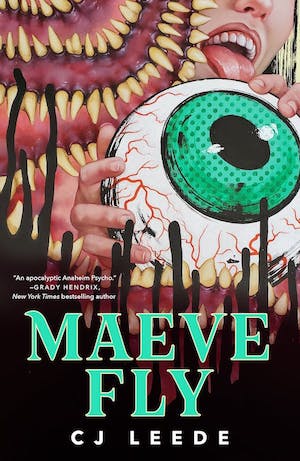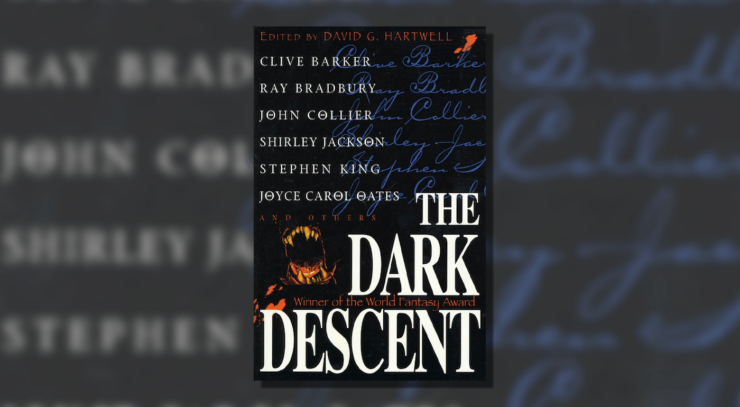Welcome back to Dissecting The Dark Descent, where we lovingly delve into the guts of David Hartwell’s seminal 1987 anthology story by story, and in the process, explore the underpinnings of a genre we all love. For an in-depth intro, check out the first article.
Montague Rhodes James is perhaps one of the more important figures in horror. A folklorist, antiquarian, and writer of short Gothic horror stories, he’s responsible for discovering multiple buried pieces of English history, as well as furthering interest in J. Sheridan Le Fanu’s work (he even edited a collected edition of Le Fanu’s stories entitled Madam Crowl’s Ghost). Perhaps most relevant to this piece, James also wrote volumes of horror criticism and produced a prolific bibliography of short horror stories—his work was even adapted into a BBC special featuring the dulcet tones of Sir Christopher Lee—meant to critique Gothic fiction while bringing the work into a more modern time and place.
In this way, James was one of the earliest to adopt the “modernist” style of horror stories, exploring more “traditional” ideas and monsters through a much more modern lens. “The Ash Tree,” Hartwell’s selection from the James canon, might not be set in a modern time, but its re-framing and inversion of the traditional story of generational curses, occult practices, and disturbing vegetation could sit alongside present-day explorations of the genre. It also manages to be a perfect discussion of the “moral allegorical” tone of horror, bringing more (for James’ time) present-day morality to a story involving the witch trials.
But while all that’s well and good, let’s dive into the summary for those who haven’t had the pleasure yet. In the 1600s, during the most intense phase of England’s mass hysteria over witches, Sir Matthew Fell, lord of Castringham Hall, testifies against his neighbor Mrs. Mothersole, whom he sees at night murmuring and cutting branches off his ash tree. Thanks to him, Mothersole is promptly tried as a witch and, despite the protests of Fell’s fellow townsfolk, hanged by Fell, who is also the Deputy-Sheriff of Suffolk. As revenge on her nosy neighbor, Mothersole utters a terrifying pronouncement upon her execution: “There will be guests at the Hall.” This prophecy of doom kicks off an unnerving series of events beginning with Fell’s death and a curse that stretches generations, all tied to the foreboding ash tree located outside Sir Matthew’s window. For, invited or no, he and his descendants have guests at Castringham Hall.
What makes “The Ash Tree” truly interesting is the way James uses his knowledge of gothic tropes and clichés to form a more original and modern work. The portents of doom are incredibly straightforward, much of the narrative takes place in broad daylight, and there’s an entire section of the story where no one goes into the cursed bedroom by the ash tree, leading to a member of the supposedly cursed family line dying of natural causes while his livestock die unnaturally instead. At times, there are even flashes of dark comedy. One such moment involves the local vicar consulting his Bible at random as a method of divination, getting clear instructions, and then promptly chalking the first Castringham’s mysterious death up to an assassination plot by Catholics in his Sunday service.
Even the setup is steeped in modernity and subversion. James spends part of his exposition writing a subdued but appropriately bitter indictment of witch trials, and the curse begins when a well-liked and influential woman (with actual occult powers) is killed by a town official who does it mainly because his neighbor was annoying him. It’s a much more modern take on the idea of “moral allegory.” While Mrs. Mothersole’s actions are certainly a trifle strange, nothing she does until after her execution is particularly malicious, and all the occult malice is entirely justifiable, since her neighbor got her officially executed just for acting odd on his property and trespassing (Was Sir Matthew an early version of an HOA? Please let me know in the comments). James extends his moral calculus to systemic evil itself— the murder and subsequent occult executions only happen because everything in the system does exactly what it’s supposed to, and the Widow’s spirit is only balancing the books. This even extends to those who band together to finally take down the titular tree, who are a group of townspeople and servants— the curse is finally broken because it kills something it’s not supposed to, and the tree is destroyed by the town banding together as a result.
While it’s gleefully subversive, “The Ash Tree” is still extremely effective. Any humor is grim and relayed in deadpan fashion. The idea of the curse (which causes grotesque bodily deformations, can poison people who touch affected corpses, and apparently drains blood) is shudder-inducing to think about. More than that, the idea of a system so apathetic that it allows for murder, seen by the universe as something it has to correct. Understanding a genre isn’t just about knowing what clichés to twist or what tried-and-true ideas to subvert—it’s about what you keep. Gothic fiction is known for a sense of foreboding and doom that extends to the environment, and James plays this to the hilt.
Buy the Book


Maeve Fly
As the story ramps up to its climax, he even sprinkles in a few superstitions about ash trees to play up the old-world idea of horror. It’s also deeply unnerving to watch people die horribly from a combination of apathy and occult revenge, with the most striking portion being the lead-up to the death of Sir Richard (Sir Matthew’s grandson), who eschews all the warnings even as you know his death—again foretold by a random passage in the Bible—is probably inevitable. At least in his depiction, James makes the undeniably horrible moments of the climax a little softer, as Sir Richard is a jerk who doesn’t listen to anyone (per James, he is a “pestilent innovator”) and insists on sleeping in a cursed room while ignoring all signs of danger.
What James proves with “The Ash Tree” is that subversion is an art. It requires understanding of the genre and its associated devices, but it also needs to be effective on all fronts. If it’s too humorous, you sacrifice the horror and tone you’re trying to interrogate. Too horrifying, and you’ve just written another horror story along similar themes of whatever you’re using the story to critique. Without a deep enough understanding of the genre and sub-genre you wish to discuss, then you’re just reversing the common plot elements without spending the time and effort to make something that interrogates and discusses the aspects you’re attempting to critique. In all these things, “The Ash Tree” succeeds with flying colors. The images are terrifying, the subversive elements shine throughout, and the grim sense of humor underscores both of these strengths perfectly. It drags the traditional Gothic into a much more modern space, critiquing the creakier aspects of Gothic literature, the motives behind the English witch trials, and in some cases the people behind those structures. Finally, it does all of this while still being an utterly terrifying story of supernatural revenge.
And now to throw it over to you. Do you think M.R. James was a serious influence on modern horror? What’s your favorite James story? Was Sir Matthew Fell an early representation of the HOA? Please let us know in the comments.
Sam Reader is a literary critic and book reviewer currently haunting the northeast United States. Apart from here at Tor.com, their writing can be found archived at The Barnes and Noble Science Fiction and Fantasy Book Blog and Tor Nightfire, and live at Ginger Nuts of Horror, GamerJournalist, and their personal site, strangelibrary.com. In their spare time, they drink way too much coffee, hoard secondhand books, and try not to upset people too much.










